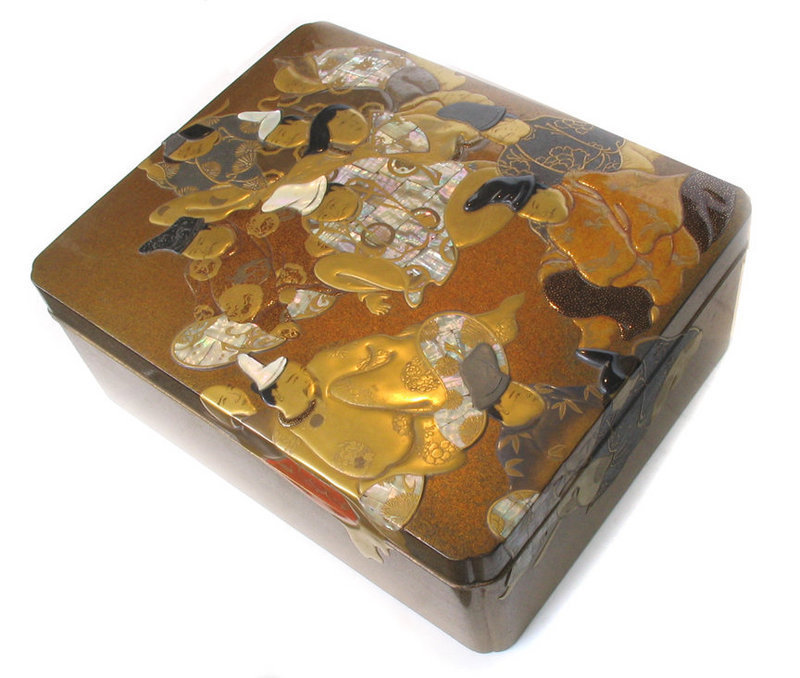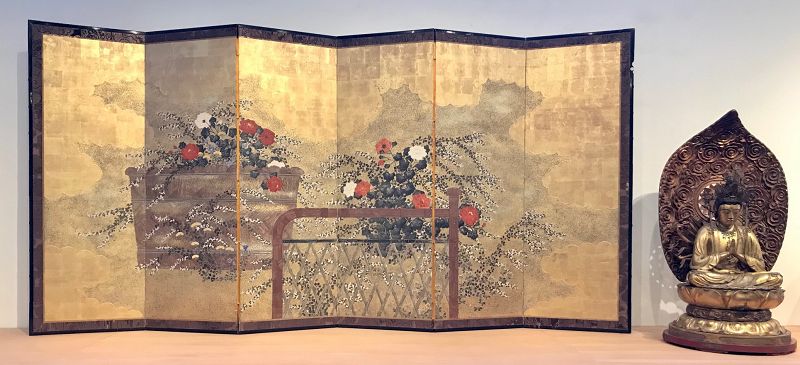Japanese Ryoshibako Document Box with Takamaki-e Lacquer
$7,500.00
During the Meiji period (1868-1912) along with the emergence of innovative writing box shapes and decorations reflecting modernist sensibilities, works drawing on historical styles and decorative schemes were revised and copies of famous boxes were prepared. Elaborately crafted sets of writing boxes, document boxes, and writing tables were often featured in world expositions, as they represented indigenous Japanese calligraphy traditions. Westerners began collecting Japanese writing boxes in earnest from the early Meiji period onward.
The document box contains a complete tray. The ryoshibako is done in a Takamaki-e technique. The rendering of the court poets is in high relief with mother of pearl inlay, pewter, horn, and gold. The figures have a dimensional effect due to scale and the pear skin ground of gold nashiji creates the composition.
Meiji Period (1868-1912)
Size: 16 1/4" high x 13" wide x 6 1/4" deep
https://zentnercollection.com/product/japanese-ryoshibako-document-box-with-takamaki-e-lacquer/


